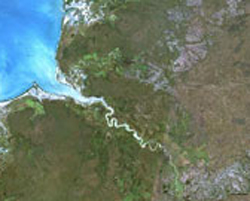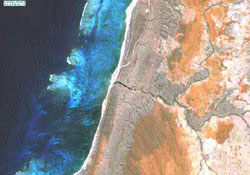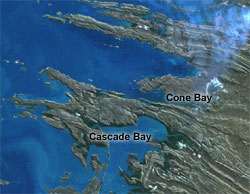Northwest Coast
- Estuaries are mostly tide-dominated, and typically feature muddy waters and strong currents
- Well developed and extensive areas of intertidal mudflats and branching, marginal marine vegetation (mangroves) that abut extensive saltflats
- Heavy rains in summer and almost no rain in winter
- The coastline is convolute, with complex rocky headlands and many embayments
- Very high proportion of near pristine estuaries due to minimal human development

East Alligator River, Northern Territory
The west coast of WA and the Pilbara, and the Kimberley regions have characteristic features outlined below
West Coast & Pilbara
- In the south, most estuaries are typically small, wave-dominated systems with sheltered lagoons
- In the Pilbara, there are muddy tidal creeks with extensive intertidal flats, mangrove forests, and saltflats
- Many rivers do not flow for most of the year due to extreme aridity
- The coast receives variable wave energy
- Tidal range varies from very low in the south to high on the Pilbara coastline
- Most estuaries are modified due to grazing and mining activities

Yardie Creek, Western Australia
The Kimberley
- Wave energy is relatively low and tidal range in the Kimberley is one of the highest in the world
- Bedrock is a major control in shaping the geomorphic environments
- Geomorphic environments are generally poorly developed

Cone Bay and Cascade Bay, Western Australia


